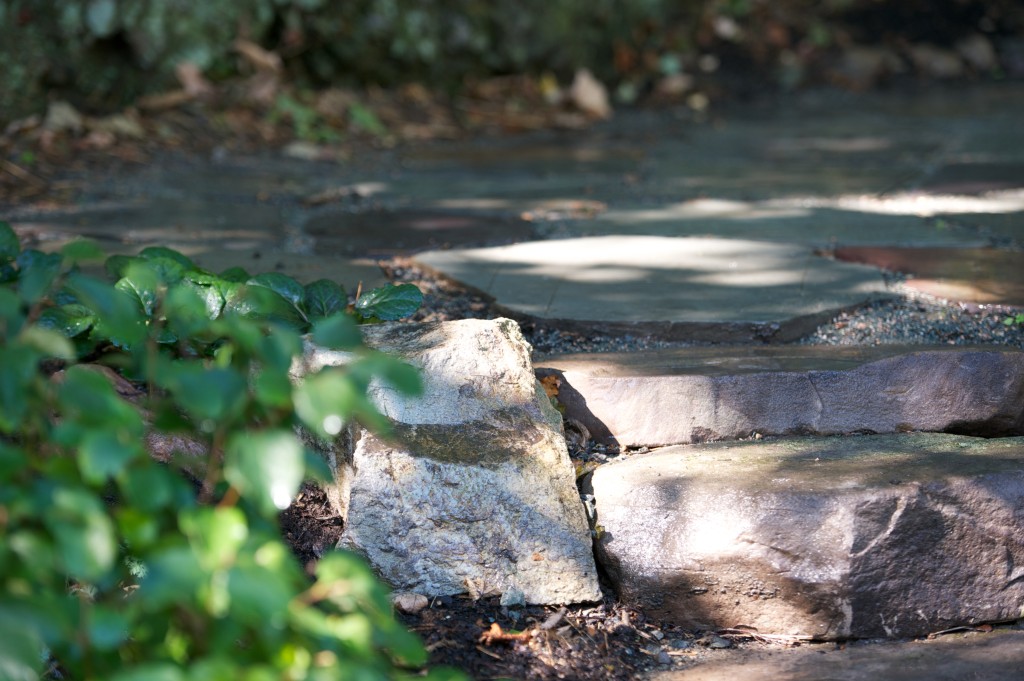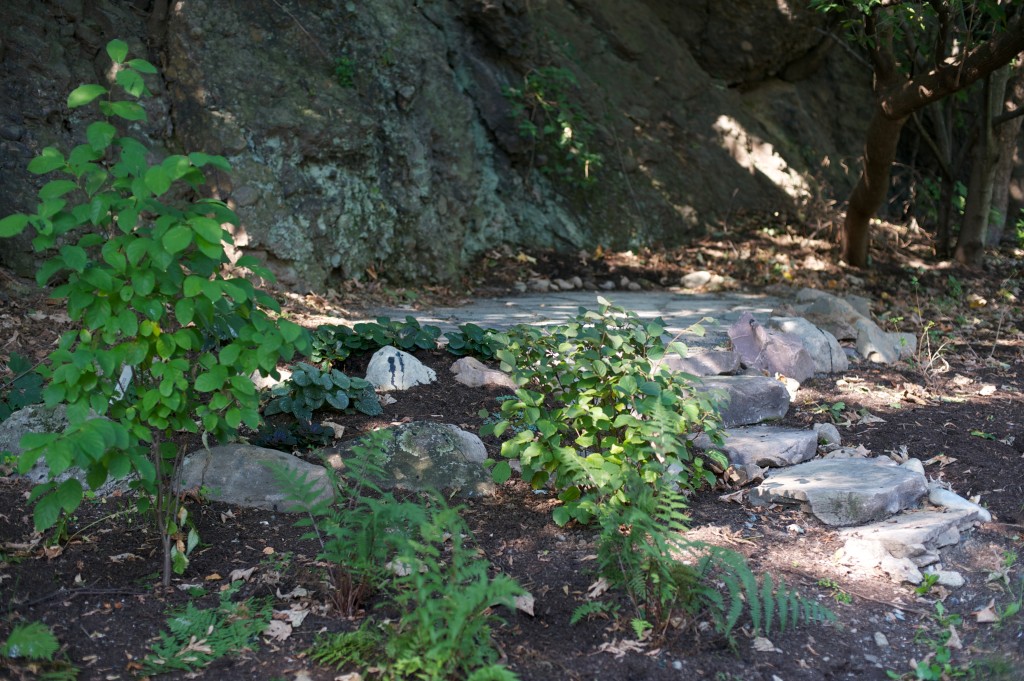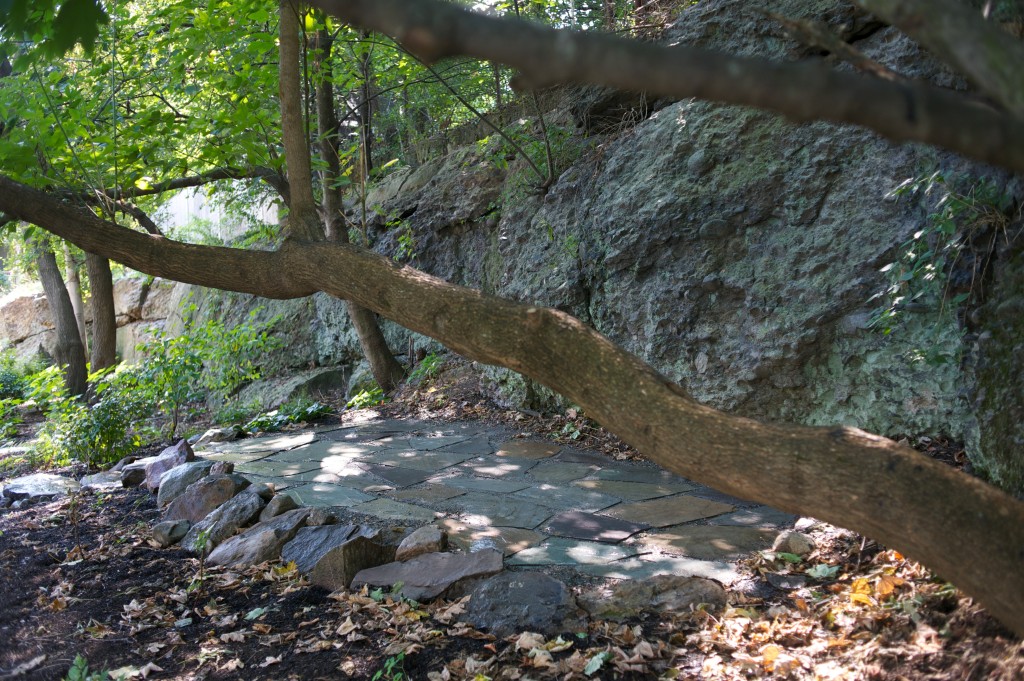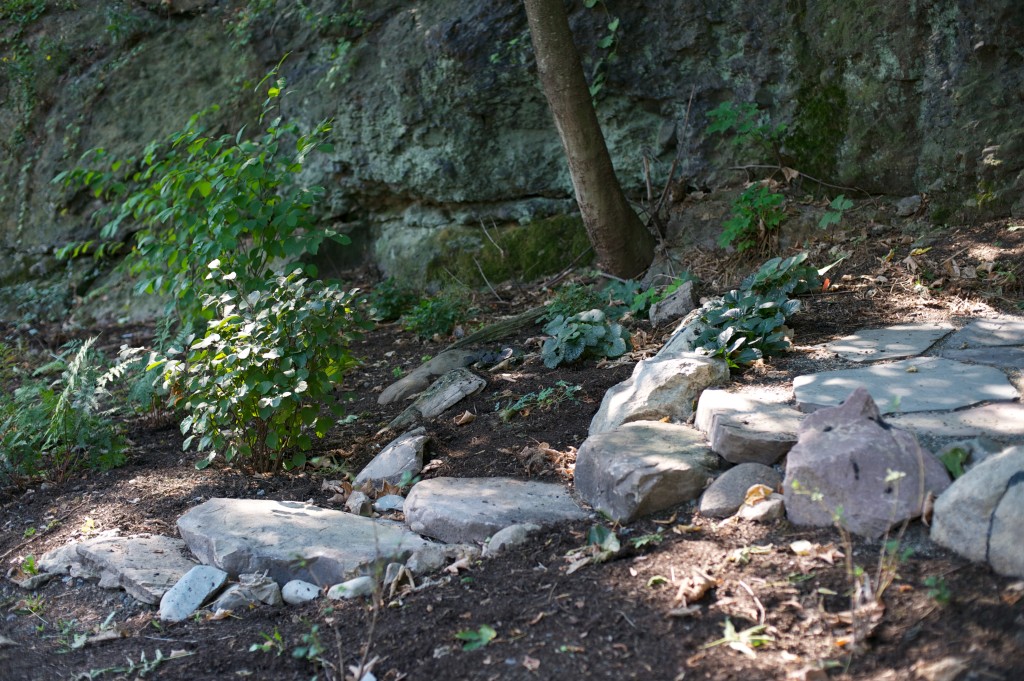Stones, Part I
Words by Benjamin Crouch. Photos by Stacey Vaeth.
A garden is never a complete thing. It is subject to the mechanical forces of weathering, which carve and settle it over years, decades and–with the hope of legacy–much, much longer. Living things grow, morph, displace, play host, reproduce, senesce, and die. Each colors, textures, and forms its space in the garden in an unceasing process. Therefore, one might crave a sense of the durable and augment the garden with objects that change little, at least in our ability to perceive.
Stone is durable. Stones still mark the furthest conquests of the Romans who laid them. Mayan stone yet frames the borders of the ancient landscapes of the civilization’s habitations. Worn, yes, but marking a place that might yet be recognizable to its former inhabitants were they to visit it now.
In the trivial scale of our own experience stone can appear immutable. A garden well-decorated in stone and matured for decades would yet be known to its maker. We use stone to craft the borders of our garden, pave its paths, and level our places to view it. A terrace of stone is setting for plants to drape or pedestal for a remarkable specimen. Stone is a necessary companion to the shade garden. It can be set in order to formalize, or, naturalize a space, depending on its placement and architecture. Let’s look at some examples, then, of the merits of stone.

Steps to the patio. 100-150 pound river stones resist dislodgement but can still be set without machinery. Handiwork can be especially advantageous in a setting where one wishes to make minimal disturbances to the surroundings.

The steps lead to a terraced patio of field cut slate below a puddingstone outcrop. Often naturally occurring, these outcrops are also a common remnant of quarries around Boston, as is the case for this Jamaica Plain garden.

The patio provides respite in a shady border to the rear of the property. A mix of native and shade-loving ornamental plants are placed throughout the new garden. The plants will fill in to create an overlay of varied texture and height, broken only by stone. Mulched perennial gardens are unfinished perennial gardens. Early autumn leaves are at home in this woodsy retreat.

Terraced among bugleweed, bugloss and fern, the stone is at graceful visual play. The colors compliment, while the textures break and vary.

Shrubs are planted to screen and enclose the patio. Spicebush and fothergilla feed and shelter the birds, while young currant and gooseberry will eventually provide snacks and privacy for the human inhabitants of this garden. The patio is perched about 2.5 feet above the existing grade for a superior view of this urban respite in disguise. Devoid of context it would appear to be a woodland retreat.







Hi Ben, Thanks for sharing your beautiful stone article and photos. Lily
great work ben. hope all is well.
I would not feel so all alone, everybody must get_______
Nice Ben.
Paul
Good work, Ben. Stones rock!
Ben: You capture the essence of the good work in the field! Thank you for inviting me to view your web page and your portfolio. Hope you are doing well! Respects, Marty